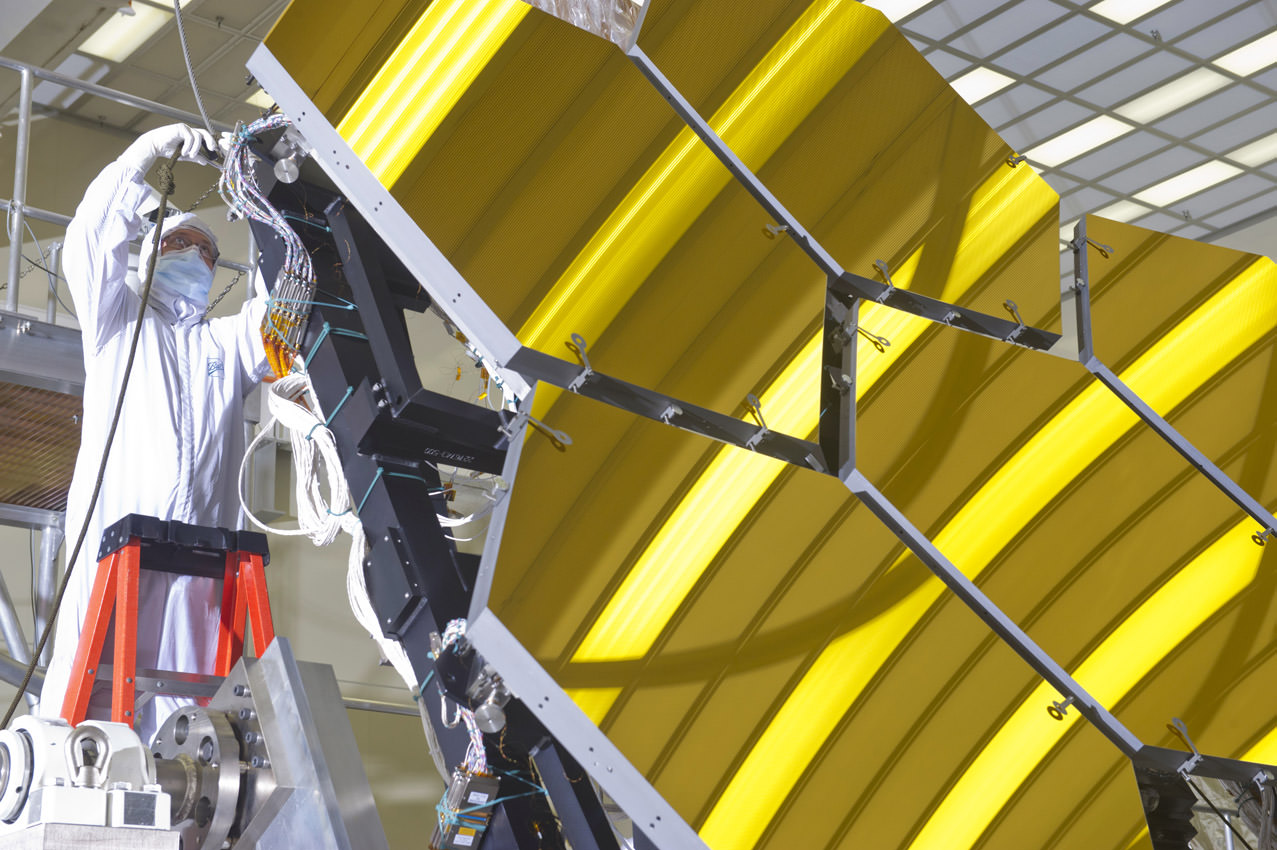[/caption]
The last of the 21 mirrors for the James Webb Space Telescope have come out of deep freeze – literally! – and are now approved for space operations, a major milestone in the development of the next generation telescope that’s being hailed as the “successor to Hubble.”
“The mirror completion means we can build a large, deployable telescope for space,” said Scott Willoughby, vice president and Webb program manager at Northrop Grumman Aerospace Systems. “We have proven real hardware will perform to the requirements of the mission.”
The all-important mirrors for the Webb telescope had to be cryogenically tested to make sure they could withstand the rigors and extreme low temperatures necessary for operating in space. To achieve this, they were cooled to temperatures of -387F (-233C) at the X-ray and Cryogenic Test Facility at Marshall Space Flight Center.
When in actual use, the mirrors will be kept at such low temperatures so as not to interfere with deep-space infrared observations with their own heat signatures.
JWST engineers anticipate that, with such drastic cooling, the mirrors will change shape. The testing proved that the mirrors would achieve the shapes needed to still perform exactly as expected.
“This testing ensures the mirrors will focus crisply in space, which will allow us to see new wonders in our universe,” said Helen Cole, project manager for Webb Telescope mirror activities.
Planned for launch in 2018, the JWST will be the premier observatory of the next decade, serving thousands of astronomers worldwide. It will study every phase in the history of the Universe, ranging from the first luminous glows after the Big Bang to the formation of solar systems capable of supporting life on Earthlike planets.
Learn more about the James Webb Space Telescope here.

